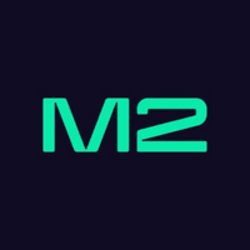
Congress could be laying the groundwork for regulated digital tokens
getty
What Happened
Senators Cynthia Lummis (R-Wyo.) and Kirsten Gillibrand (D-N.Y.) introduced the Payment Stablecoin Act of 2024 on April 17. Gillibrand called it a “landmark bipartisan legislation that creates a clear regulatory framework for payment stablecoins that will protect consumers, enable innovation, and promote U.S. dollar dominance while preserving the dual banking system.”
The proposed law would bring oversight and transparency to the $150 billion stablecoin industry and could be the first major crypto legislation enacted in the United States. It would also make it easier for state and federally regulated banks to take custody of digital assets on behalf of customers.
Subscribe now to Forbes CryptoAsset & Blockchain Advisor and successfully navigate the bitcoin and crypto market rollercoaster.
Key Background
The bill would permit stablecoins—tokens meant to maintain a stable value, usually $1—to be issued by nondepository trust companies (nonbanks) when the nominal value of all its tokens is under $10 billion. A larger issuer would have to be “a depository institution authorized as a national payment stablecoin issuer,” according to the text. Companies such as Circle (issuer of $33 billion USDC) or Paxos ($135 million PAXD), would have two options to be able to continue to issue stablecoins if this bill were to become law: either a state nonbank pathway or as a depository institution at the federal or state level that becomes a national payment stablecoin provider. Any other form of stablecoin issuance is prohibited, including algorithmic payment stablecoins like TerraUSD, which collapsed in 2022 and destroyed $50 billion in value.
The bill also has an “extraterritorial clause,” meaning that these laws apply outside the U.S. to companies such as Tether, the controversial stablecoin industry leader whose token is currently worth about $110 billion.
A section toward the end on the accounting treatment of custodial assets would effectively overturn the implications of the Securities and Exchange Commission’s Staff Accounting Bulletin (SAB 121) that requires crypto held in custody to be an asset on the bank’s balance sheet. SAB 121 has been criticized throughout the industry since its introduction in March 2022. It requires banks to keep cash in reserve for the total value of their digital asset holdings, which can be very expensive.
There have been multiple attempts at passing crypto bills in recent years, with some focused on setting rules for stablecoins and others seeking to delineate when a digital asset is a security versus a commodity to determine which regulator has primacy—the SEC or Commodity Futures Trading Commission (CFTC). Two such bills passed out of the House Financial Services Committee last year, but the Senate has taken up none due to a lack of enthusiasm from Senate Banking Committee Chairman Sherrod Brown (D-Ohio). In a recent Bloomberg interview, however, Brown suggested he could be open to stablecoin legislation for the first time.
Key Statistic
As of April 18, the total market value of stablecoins was $158.2 billion. Dollar-backed stablecoins such as Tether and Circle lead the pack with a 90% share of the market, while algorithmic stablecoins and newcomers such as Ethena ($2.36 billion) represent a minor portion, around 3%.
Jason Brett
Outlook And Implications
This bill has a much higher chance of becoming law than its predecessors, including the 2023 Clarity for Payment Stablecoins Act, passed out of committee in the House last summer. Aside from Brown’s disinterest, a key issue with that legislation was a lack of clarity on whether state regulators, such as the New York Department of Financial Services (NYDFS)—which has issued its own stablecoin guidance—or the Federal Reserve would have oversight primacy. The U.S. has a two-tiered banking system to service its large and diverse financial services industry. In particular, there were fears on the Democratic side of the aisle that a swath of potential issuers would go to a state with lax regulations should there not be a federal floor to protect consumers. Gillibrand and Lummis tried to strike a balance with this bill by creating a threshold of $10 billion, above which issuers would need to register with the Federal Reserve.
Additionally, multiple sources who spoke on the condition of anonymity confirmed that this bill results from months-long negotiations with the White House, Treasury Department, the Federal Reserve, the NYDFS and the Division of Banking in Wyoming, Lummis’ crypto-friendly home state.
British Virgin Island-domiciled Tether would be a particularly interesting case when it comes to registration because its tokens circulate widely throughout U.S. investors and exchanges, but the company itself claims not to service U.S. customers because it does not make direct issuances to such firms. The Treasury has sought authority from Congress to go after issuers like Tether because of concern that criminals are using dollar-backed tokens to hide their transactions, and it is difficult to predict how this legislation would affect its ability to operate.
It will also become illegal for developers to issue algorithmic stablecoins. These tokens rely on other mechanics, such as risky trading strategies, to maintain dollar-price pegs for their tokens rather than putting cash and short-term treasuries in a vault. The algorithmic market is much smaller than it used to be, but one asset to watch is USDe, which launched in February and is now worth $2.3 billion. Ethena (ENA), the company behind this project, uses a covered call strategy in crypto markets to protect the dollar peg. This arrangement has created fears of another TerraUSD collapse. Another token to watch is Dai (DAI), with a $5.8 billion market capitalization that relies on individuals overcollateralizing debt positions with crypto to borrow the dollar-backed asset.
It is important not to underestimate the impact of removing SAB 121, which would eliminate a significant amount of red tape. Banks are increasingly becoming comfortable with digital assets. Many, including JPMorgan and Goldman Sachs, offer clients exposure to the asset class and are authorized to buy and sell bitcoin to the new exchange-traded funds based on the asset’s spot price. Large custodians like State Street and BNY Mellon want to create bespoke custody businesses.
Decision Points
As this bill is from the Senate, the role that Chairman Patrick McHenry (R-N.C.) of the House Financial Services Committee plays in the negotiations will be critical since he already has his version of a stablecoin bill that has reached the chamber floor. If McHenry signals a public endorsement or compromise on the Lummis-Gillibrand bill in the Senate, stablecoin regulation has a very good chance of becoming law. In the Senate, Chairman Brown of the Banking Committee will decide whether this bill will move to the floor.
Regarding investment portfolios, exercise caution before purchasing and holding large amounts of algorithmic stablecoins such as USDe. The same could be true for governance tokens underpinning these networks, such as Ethena’s. The token (not to be confused with USDe itself) was gifted to users in early April and has already surged to $1.00 from 64 cents. Other tokens to keep an eye on are MKR (MakerDAO), which supports the Dai stablecoin, and AAVE (Aave), a decentralized lending platform that is also starting to issue stablecoins.
Regarding stocks, the crypto exchange Coinbase (COIN) and Circle could be big winners of this legislation. Coinbase went public in April 2021, and its stock is up 274% over the past 12 months as the crypto market recovered. Circle has filed a confidential S-1 with the SEC to go public in the future. The two companies are the joint issuers of USDC, and they share revenue from investing its $33 billion worth of collateral on a 50/50 basis. If Tether loses market share from this legislation, which is not a foregone conclusion, these companies would benefit first.



































































![Pundi X [OLD]](https://assets.coingecko.com/coins/images/2170/large/pundi-x.png?1696503130)









Be the first to comment